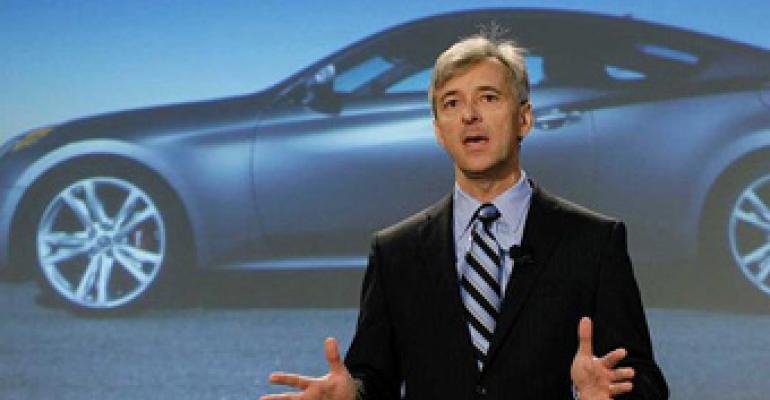
PORTLAND, OR – Upcoming U.S. corporate average fuel-economy guidelines just going into effect have loopholes that could mitigate the mandates intended effects, Hyundai Motor America chief John Krafcik says.
Despite the goal toward better fuel economy, with a mandated CAFE rule of 35.5 mpg (6.6 L/100 km) by 2016 and a proposed 54.5 mpg (4.3 L/100 km) for 2025, the trend in the U.S. market may not be an increase in small, fuel-efficient cars over the next 14 years, as expected.
“It used to be we wanted to downsize to meet fuel-economy targets, but now you really don’t have to do that,” Krafcik tells WardsAuto at a media event here.
He predicts some auto makers may take advantage, because larger vehicles will be held to a lesser, footprint-based, standard from 2012 onward.
The ability of an OEM to game the system by exiting segments within its portfolio likely means auto makers in 2016 and 2025 could “hit every (CAFE) target, but the overall industry average still would be lower than what’s expected because the segments have shifted up,” Krafcik says.
For instance, the compact-pickup truck sector may continue to decline or disappear altogether because auto makers will be allowed a less-stringent fuel-economy rating for their fullsize pickups.
“Every well-intentioned action has an unintended negative consequence,” Krafcik says. “This is a classic one. Because of the new CAFE guidelines, the most fuel-efficient segment for pickup trucks, the small ones, aren’t going to be available in the U.S. market. That’s crazy.”

But while Ford plans to exit the small-truck segment, with sales of its third-place Ranger down 9.2% through August, Toyota and Nissan, sellers of the No.1 Tacoma and No.2 Frontier, respectively, have said their models will live on, at least for one more generation.
Annual sales of small pickups have been in a freefall, plummeting to some 200,000 units last year from more than 900,000 in 2001. Their share of the light-vehicle market also has dwindled to 2.3% from 5.3% over the same period, according to WardsAuto data.
Against this backdrop, fullsize pickup deliveries have remained relatively stable, gaining share between 2001 and their 10-year peak in 2004. Last year, the fullsize pickup segment rebounded from the 2009 recession with 1.3 million sales and a share hike of nearly one full point to 11.6%.
Krafcik says the government’s new 2025 CAFE goal of 54.5 mpg will be “much, much more challenging” than the 2016 target. “It’s a huge test for all of us.”
Hyundai is looking to eke out more efficiency from its internal-combustion engines and also to tap existing technologies, such as employing direct injection, advanced automatic transmissions and lighter-weight, stronger steels.
“We’ll get as far as we possibly can,” Krafcik says of the 2016 and 2025 rules.
He also says there is a provision in the 2025 proposal allowing auto makers a mid-term assessment to see how they are doing. “Are we really doing everything we can? And if we are, and these goals still seem unattainable, we can talk (and) figure out a new set of targets.”
Hyundai had the best fleet fuel economy of any auto maker for the ’10 model year, at 25.9 mpg (9.1 L/100 km), according to the Environmental Protection Agency, and continues to pursue leadership in that area, Krafcik says.
The auto maker has set its own 2025 CAFE target at 50 mpg (4.7 L/100 km), which it says equates to a window-sticker estimate of 37 mpg (6.4 L/100 km), according to EPA methodologies that account for real-world driving.
Hyundai offers products in most U.S. segments, except for pickup trucks and premium-priced sports cars. Krafcik doesn’t see the need for a sports car that would compete with the Chevy Corvette or Nissan GT-R, nor would it be a wise investment.
“I'm not saying we'd never do one, but it wouldn't be a priority of mine,” he says. “You define your brand as much by what you choose not to do as what you do. We've got a laser-like focus on leading the industry in fuel efficiency.
“Would it be cool and fun to have a halo performance car? Yeah. But it would be expensive, and what would it really do for us?”
Hyundai’s ’12 Genesis coupe, which ranges in price from $22,250 for a 210-hp 4-cyl. model to $32,250 for a 306-hp V-6 variant, is a good halo car for now, bringing buyers into showrooms, Krafcik says.





